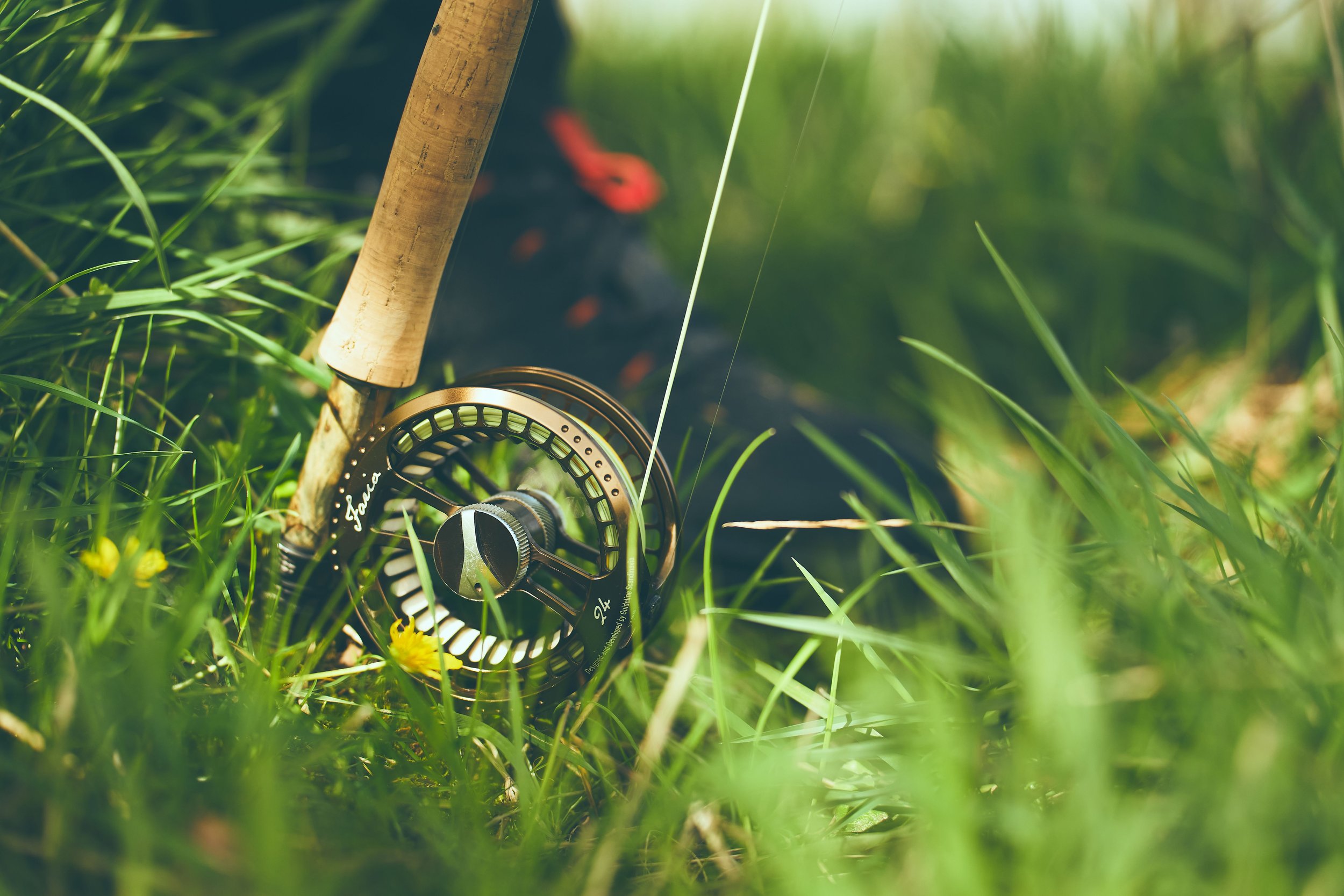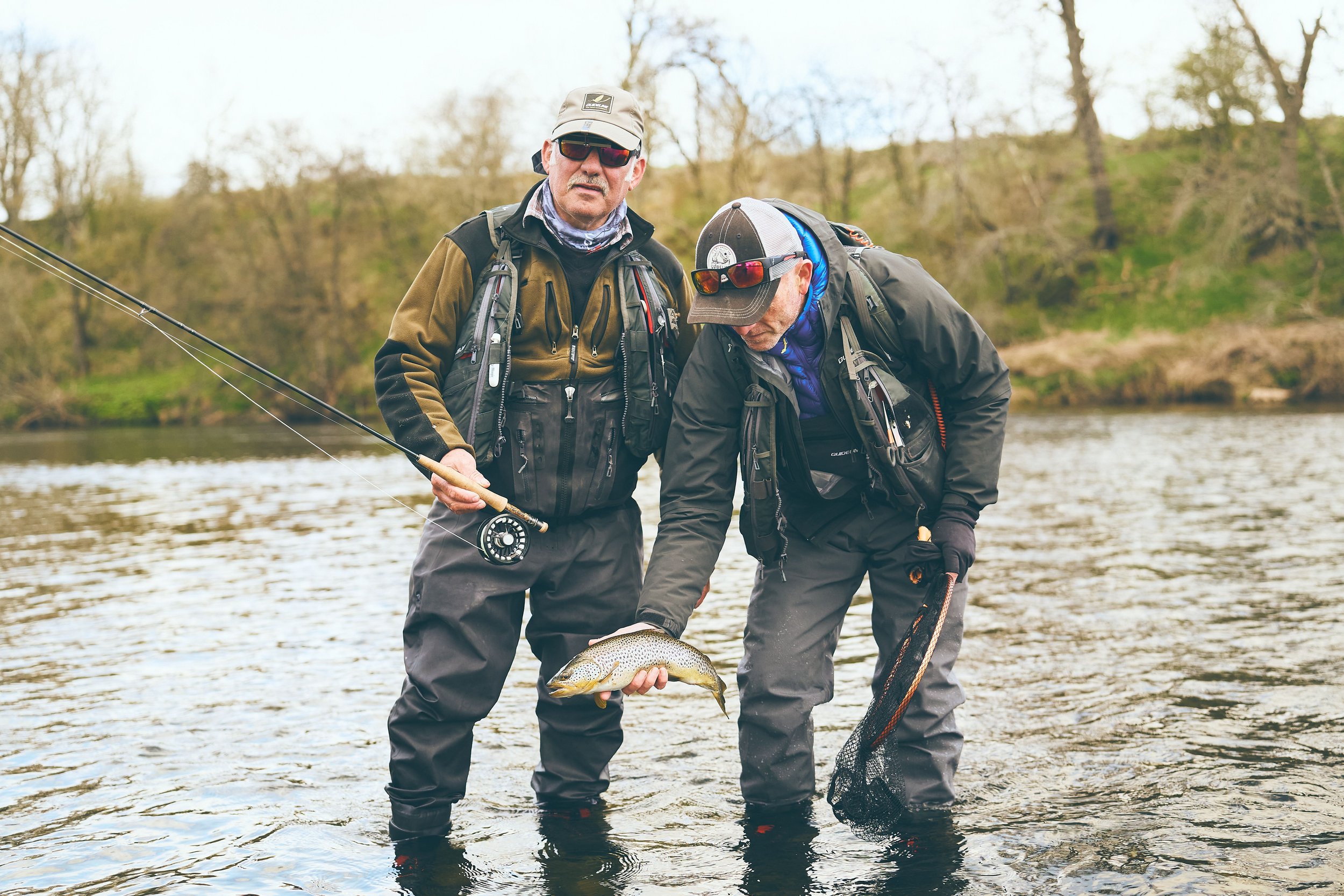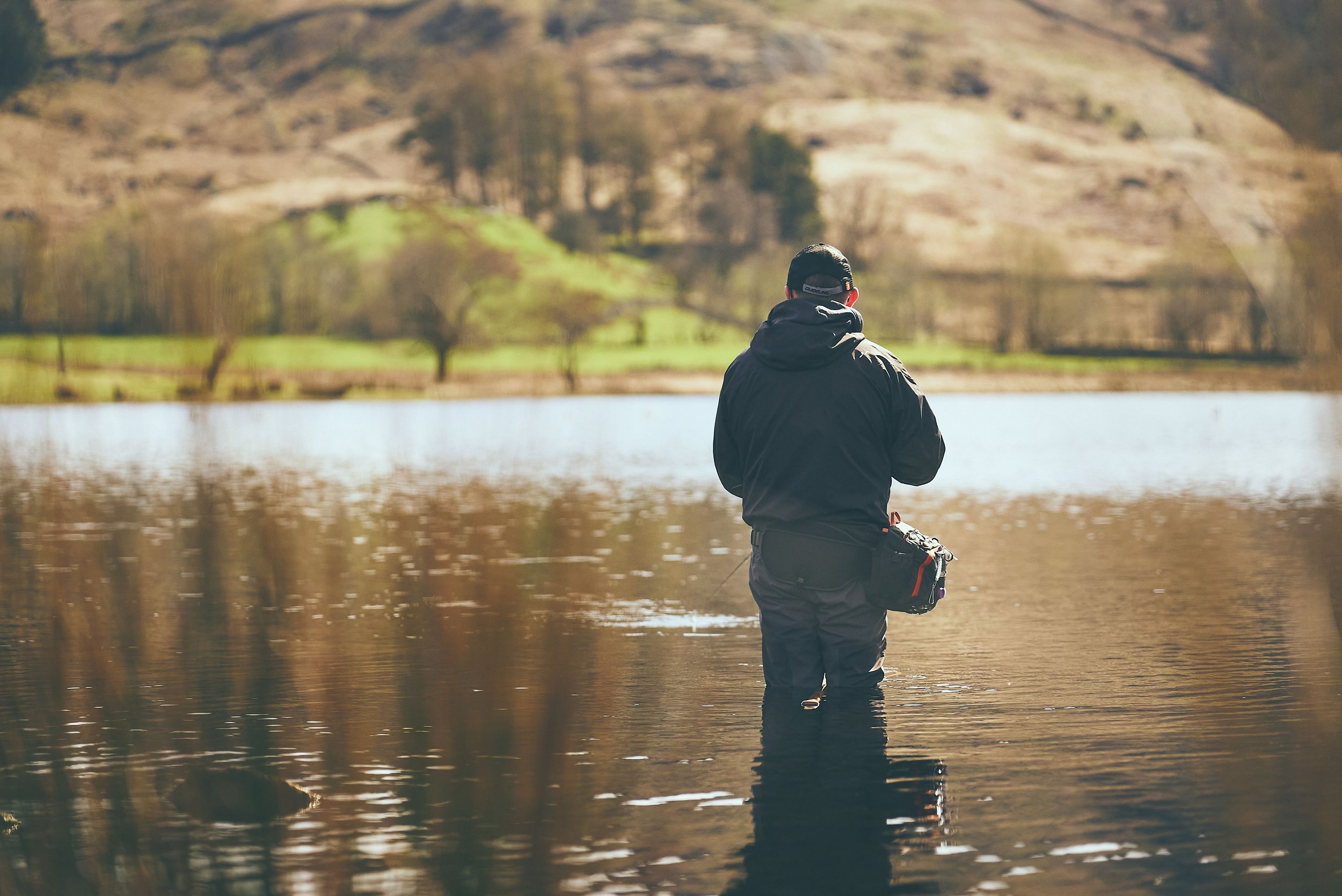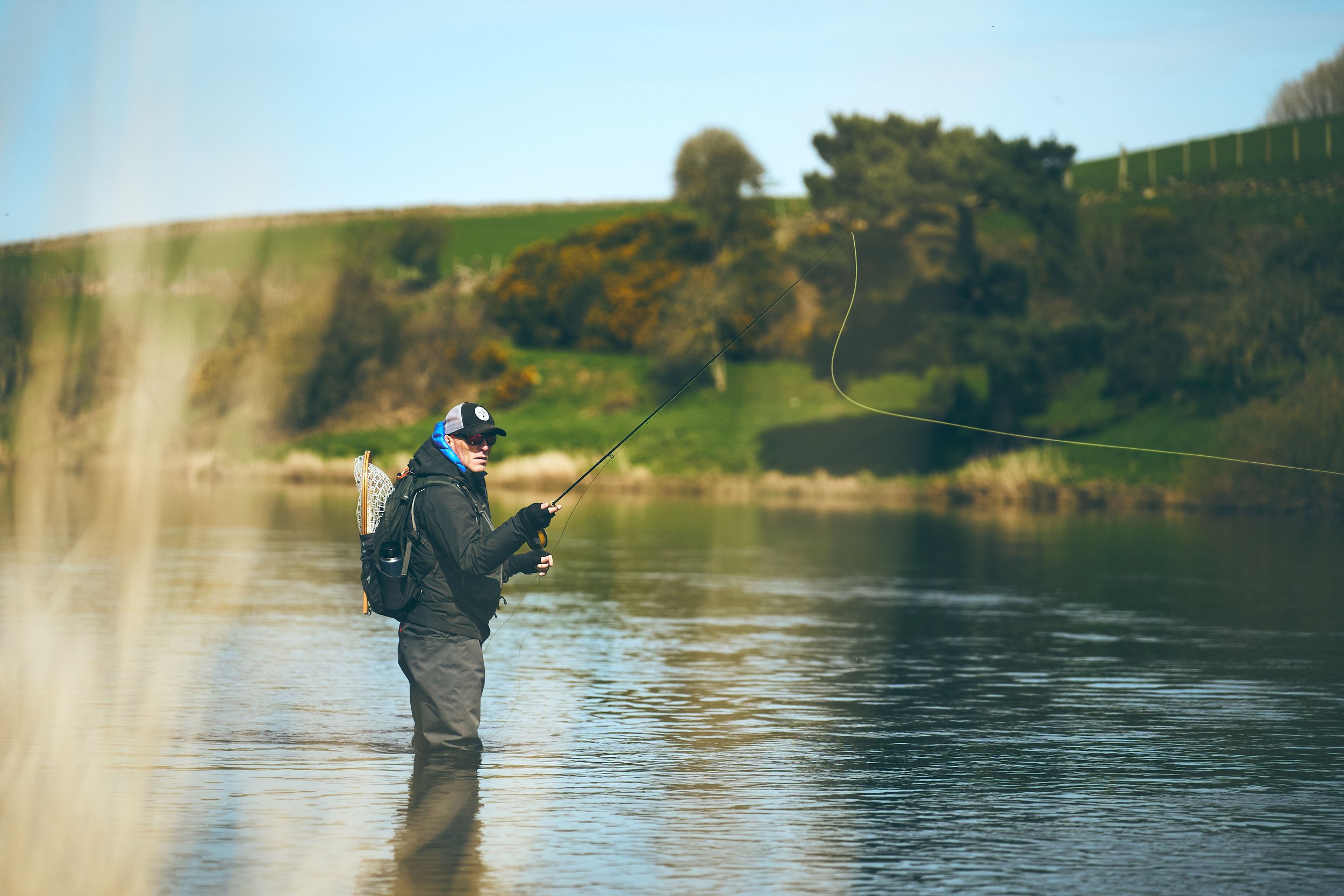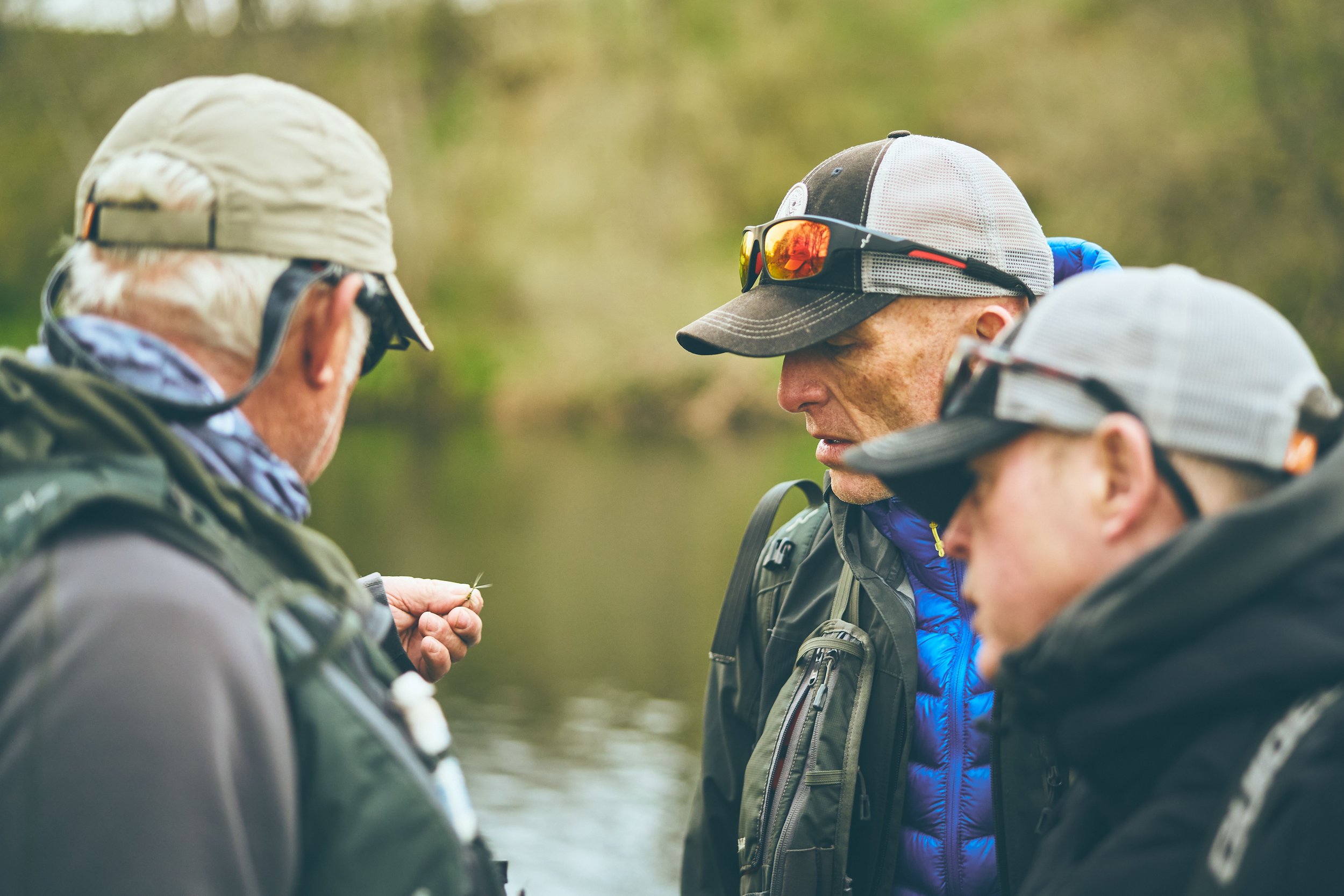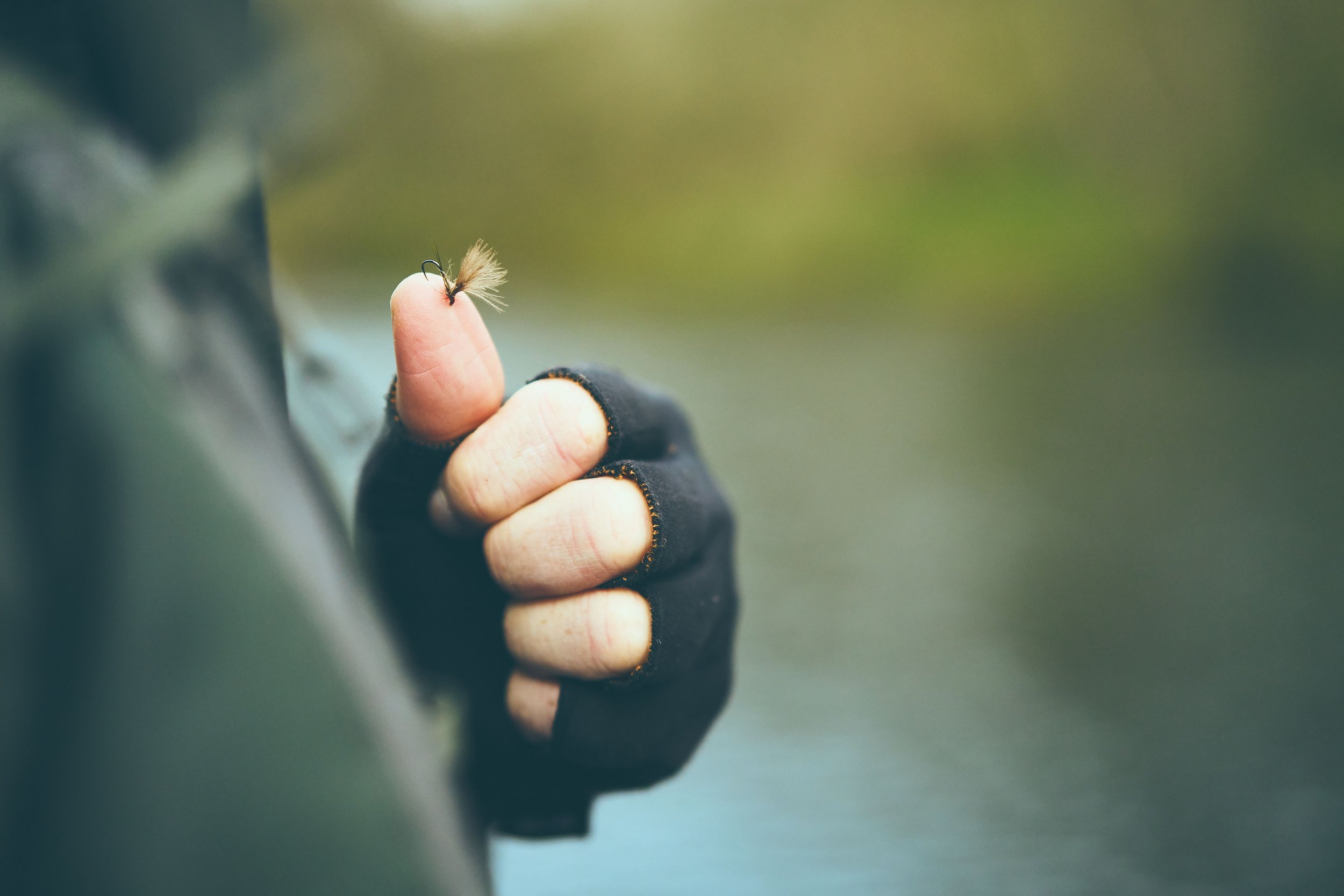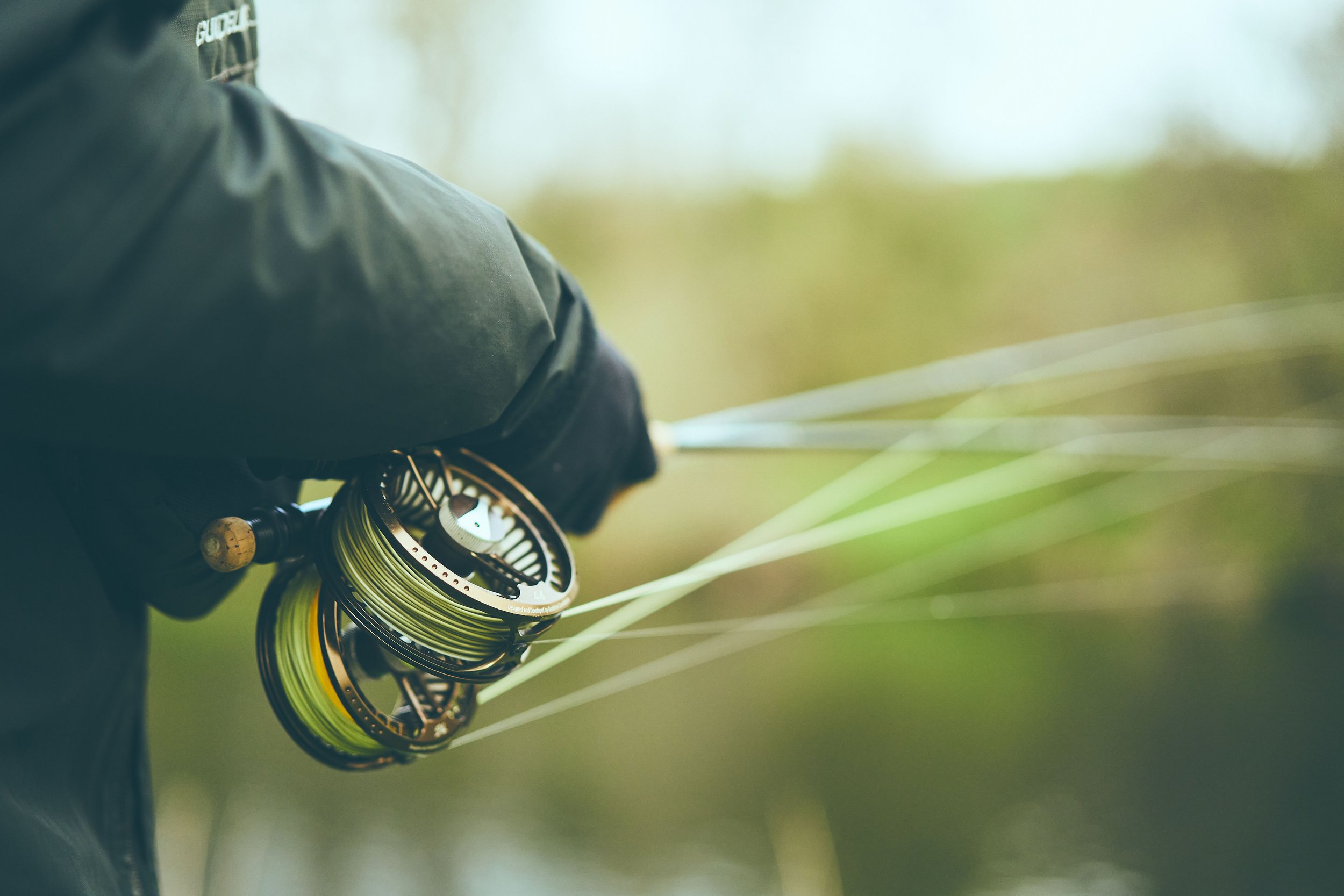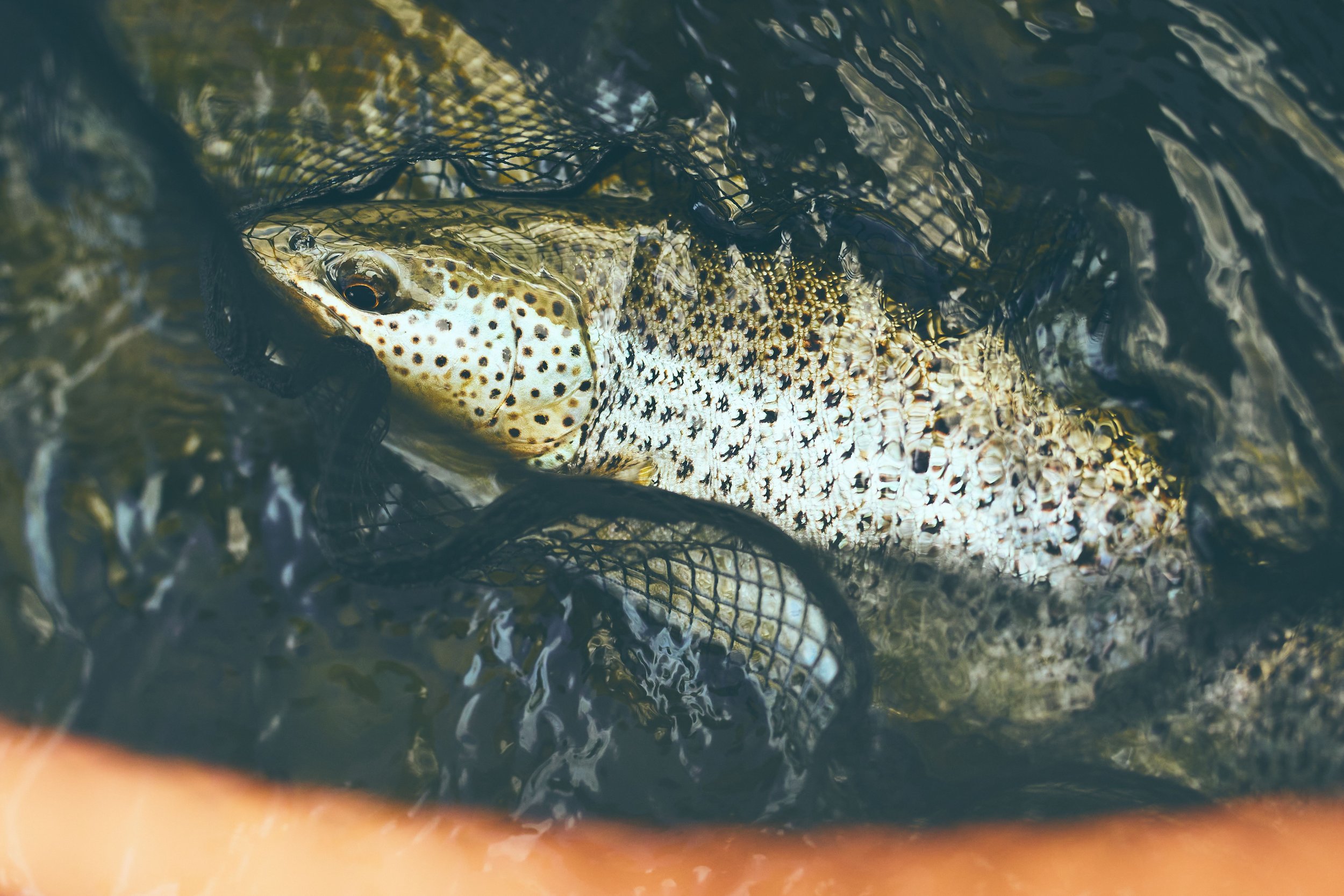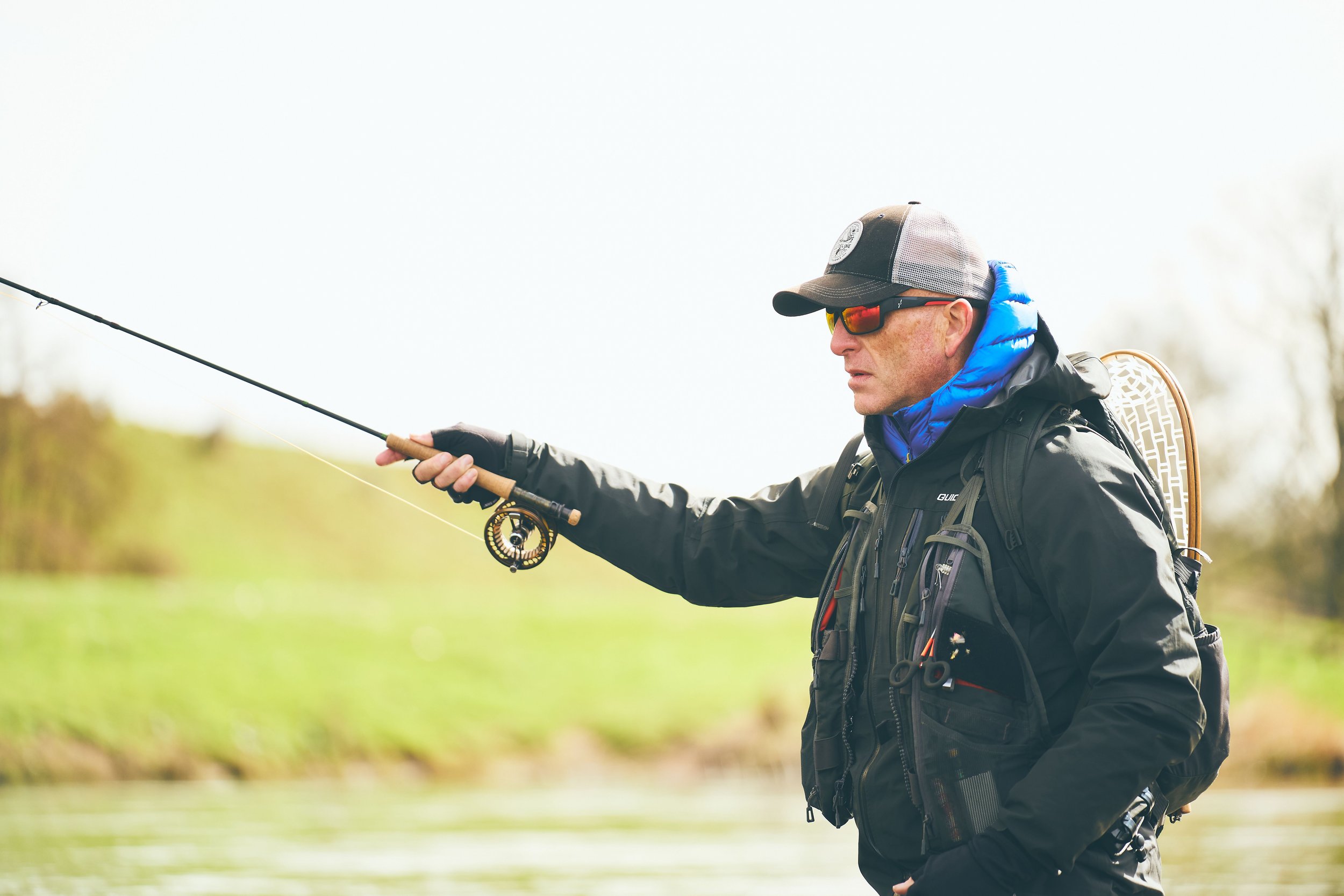
Jim Curry
Photos by Alvaro G. Santillán
1. I grew up like most anglers with the classic 9ft 5 weight as my goto river rod. More recently four weights become the new five with fishers scaling down a line size. But now undoubtably with rod and line design moving on at pace we now have lighter options available to us. Giving us the advantage of super delicate presentation and tippet protection without sacrificing range. With this in mind for my dry fly fishing I now fish a two or a three weight for my dry fly fishing. Game changing stuff for me. My current favourite this season is actually a 9ft 6in 2wt.
Reels with a powerful drag systems are fairly irrelevant for the size of fish I generally encounter in the North of England. Balance however is critical as this ensures I can fish comfortably all day.
Perversely this means buying a lighter therefore more expensive reel which comes with a better drag. I do travel a lot to fish abroad and then the drag comes into its own.
With regards to floatant I tend to flip between gels for standard hackled dries, good old fashioned mucilin for bigger dries like Balloon Caddis patterns and I do like the CDC oil for the higher maintenance CDC patterns.
Clothing I always prefer sombre hues to blend in as much as possible. I also take advantage of the technical clothing available today, which is wind proof, UV resistant and wicks sweat away warm days. I like my shirts to have a hood. Keeping warm is way easier if you have hood to pull up and keeping the sun off my head on warm days is important. There is no excuse for allowing the weather to derail you fishing these days from being either to warm or too cold.
For glasses I carry two pairs. One for normal/bright light conditions during for the day. Then a low light lens for early mornings and crucially late evenings when the light starts to fade, great also for very dull days and shaded spots. These are super a super import part of my kit. I feel lost without them. Spotting subtle rise forms in tricky light does produce consistent results. Oh and a cheap pair of reading glasses from the pound shop. At nearly 50 years old 5x - 7x is getting harder to knot, even on the brightest days. I know most fishers may think that it’s extravagant to have two pairs of good quality glasses, but believe me if you are adding some equipment get a good pair of low light glasses.
2. Leaders are always tapered, using a brand which gives me a long butt section to ensure a smooth transfer of energy through the cast, resulting in pinpoint accuracy. I fish as long a leader as I can get away with depending on the width of the river or stream. I rarely fish less than 16 feet on rivers. I need to keep that fly line as far away from a rising trout as I can. Always use copolymer for fishing dries. I want that limpness to ensure a natural drift of the dry. I don’t like the stiffness of floruocarbon for dry fly fishing I want my fly to go with the flow not work against it.
My go to leader make up is a simple one but then I am from Yorkshire. A 12 ft pre tapered leader 4x or 5x , small tippet ring, then a tippet of 5x or 6x out to my desired length. Having guided for over 25 years and witnessed lots of fishers chasing trout on dries I would say that failure to give enough time and thought into leader make up is one of the reasons most anglers are inconsistent at best on the rivers. Often endlessly switching fly patterns when the issue is the presentation not the pattern. Finally I always up the diameter of my tippet in the evening when the light starts to fade. Fish become more confident at these times and less likely to spot the tippet. Often this in summer is when the big fish come out feed and I don’t want to get broken off. Tippet wise I ways fish the heaviest tippet I can get away with rather than the lightest.
3. The approach to the water cannot be underplayed for the dry fly fishermen. The uber paranoid brown trout gently inhaling dries will not tolerate a clumsy approach period. I always construct a plan in my mind of how I will approach my target and get in position to make to take my first shot.
Where do I need to be for the best chance of the fish? The angle of my delivery? The speed of the flow? What is the current doing that might rob me of that drag free drift? Will I be throwing my shadow over the water? Only when I’ve run these questions over will I be ready to make my approach. Then I’ll make my entry quietly into the water, moving slowly and carefully, each gentle step upstream is often followed by a pause to ensure there are no bow waves pulsing up the pool. Often in shallow water I lift each step carefully out behind me before resetting my next forward step toe first out in front of me. Ever sat and watched a heron wading? Each step they take barely leaves a ripple on the surface. Then I like to get close to my fish and you can if you approach with extreme caution. Once in position I’ll wait for as long as it takes for the fish to show again. I need to make sure I’ve locked in the coordinates before I make the cast.
4. Reading the water effectively is key to success. That old adage “time spent in reconnaissance is never wasted” Reconnaissance takes time and time is what you must take to study the complex flows and micro currents that allow you to read water efficiently.
When I’m chasing large fish on dries I rely heavily on my ability to read where the fish might be. I’m always looking for that five star hotel lie that a big fish will move into. If theres enough current, cover and depth for fish to drop into in if alarmed, then I look long and hard around these areas. If theres no steady hatch to keep fish up on the fin I never rush into a pool and just start casting. I take my time to scan the pool ahead looking for signs of fish. I’ve seen way to many fishers walk straight into a pool and start fishing fruitlessly the entire length of water, when 5 minutes crouched watching for signs of fish in likely looking areas would be hugely more effective.
5. If your casting stroke isn’t clean and you’re loops aren’t consistent then fishing dries isn’t going to produce results. If theres not enough line speed to turnover your leader and dry to it’s intended target and the presentation is poor don’t expect much to happen. Still to this day when faced with a big rising fish the pressure and excitement builds in me and when the nerves are tingling mistakes are made if that casting stroke isn’t dialled in. Good trout are usually one shot fish so it’s crucial you can put the fly on the money when it counts. I fell in love with the art of casting in my teens and still to this day I blow shots at fish. Non of us are robots and when it happens that’s ok too, the fish have to win at times. But to be a good dry fly fisher you need a good casting technique. Every fisher I rate highly at the art of dry fly fishing casts clean loops.
6. Entomology to me isn’t about being able to sex a mayfly or relay latin names on command. Its about using your eyes to establish what the fish are feeding and what’s on the water and in the air.
Upstanding timings of hatches for your chosen water is important, meaning what you expect to hatch during the season and also when during the day you might expect a hatch. This is governed by a number of factors including water temp, air temperature, wind and how much cloud cover there may or not be. Ultimately I have a working knowledge of the fly life I suspect I will encounter and as my old mentor Peter McKenzie-Philps said to me. If something small and black floats past and a trout takes it. Put something small and black on.
7. Rise forms manifest themselves in different ways. Some are splashy and spectacular and others almost imperceptible. The rise form obviously allows me to dial in the coordinates of the fish but also enables me to ascertain what stage in its life cycle the fly is in, based on wether its on surface of the water, or trapped in the surface film. Don’t be fooled by thinking a tiny dimpling rise is always made by tiny fish. Often in summer when the aphids are dropping from the leaves of over hanging trees big fish will sit just under the surface lift just a couple of inches to pick of these tiny creatures. There are so many of these tiny flies they fish sit confidently high in the water. The same fish a couple of months early hitting large dark olives makes far more racket as they travel from further away to hit the calorie dense offerings. Finally if you sit and watch fish rising during a heavy hatch it’s very common for the fish to miss the natural fly completely. So although normally its your fault if you miss the take, but not always.
8. Fly Selections for me are a pretty simple affair but then I’m a fairly simple guy. My dry fly box doesn’t contain many different patterns. It does however contain these patterns in a big range of sizes and there for me lies the key. I want my flies to be suggestive rather than purely imitative. If the shape, size and footprint is correct and I present the fly accurately the trout will generally take. Most of my dry flies sit in the surface film rather than on it. The insects spend way more time stuck in the surface film trying to fully emerge before they take flight and then again during the spinner fall as they lay on the water depositing eggs. Rather than the limited period of time they sit on the surface prior to lift off. I really love the CDC patterns they catch me fish everywhere but they are high maintenance, especially if the action is fast and furious as they become water logged and require some drying before being re launched. Add failing light int the equation and I’ll always switch to a more durable pattern in favour of the cdc at these times.
9. Presentation and Drifts we mentioned briefly in the casting question but to recap. As a guide for many years I watched clients make cast after cast drifting back towards them with the fly sat in a pile of bunched up tippet. Clients often just happy that they could actually just see the fly and less worried about the leader straightening out. Only then to request a change of fly as that one wasn’t working. I need that presentation to be clean and the drift to be controlled by me and in complete harmony with the flow if I want to catch consistently.
10. If upstream or downstream is the question then my answer is both or even better whatever it takes to get the fly drifting to the fish as naturally as possible. Living in the North of England I’m not governed by the traditional chalkstream rule of always casting upstream. I would say that even though this is the case almost all of the fishers I see in my part of the world never consider that you can drift a dry downstream. There are times when this skill has to be in my armoury. If I physically can’t get below the fish because of bank side obstructions or deep water then downstream dry fly is the only option. Also for fish right on the tails of pools where if I were to approach from down stream my fly line instantly gets dragged by the fast broken water dragging my fly, then again I will approach from upstream. It’s a skill that requires more technique than fishing upstream as you must introduce the correct amount of controlled slack line into the delivery to get the perfect drift. Too much and theres too much slack to set the hook. Too little and the fly skates. The downstream also comes into the equation on super spooky fish in clear water that will not tolerate seeing the leader drift over them before the fly. I always try and get an angle on the fish which I firmly believe gets a more consistent hook set.
11. Fighting fish. So when that hook sets its not the time to be worrying about knots and connections. This year I’ve already fallen foul of failing to listen to my own advice . After having just landed my biggest fish in the UK I stood up and saw another fish that looked as big take a fly off the surface. In my haste I failed to check the knot. Made the cast, the fish rose, I tightened and the knot gave way. I had the time to check and re tie so completely my fault. When fighting fish I tend to use a lot of side pressure during the fight. This way I can steer the fish away from obstructions and can push a deep bend through the rod allowing using the absorption of the rod spring to protect sometimes very light tippets. I fight my fish hard even on light tippets, another Eason I’ve scaled down my line ratings. The longer they are out there in and amongst snags and boulders during a fight the more chance there is of them getting snagged. When landing fish I keep the rod at an angle so I can sweep/steer the fish into the net. So many fish are lost trying to land fish with a high rod, lifting half the fishes body weight out of the water into the net on a tiny hook can and often does end with the fish slipping the hook at the last minute.
